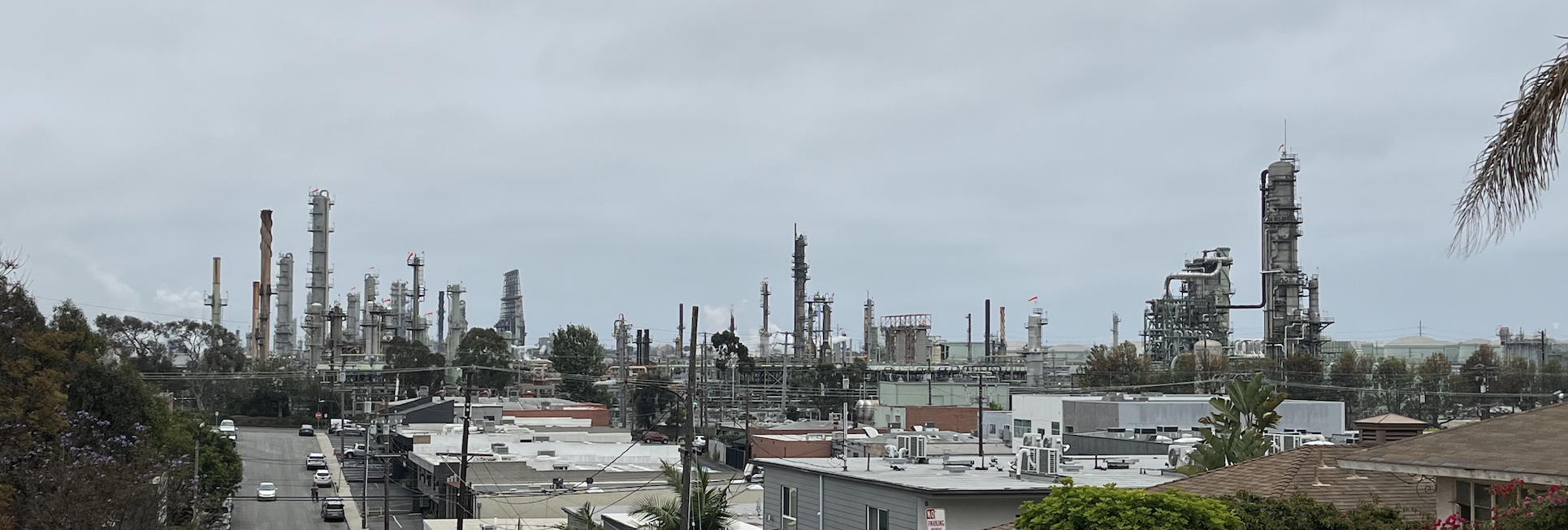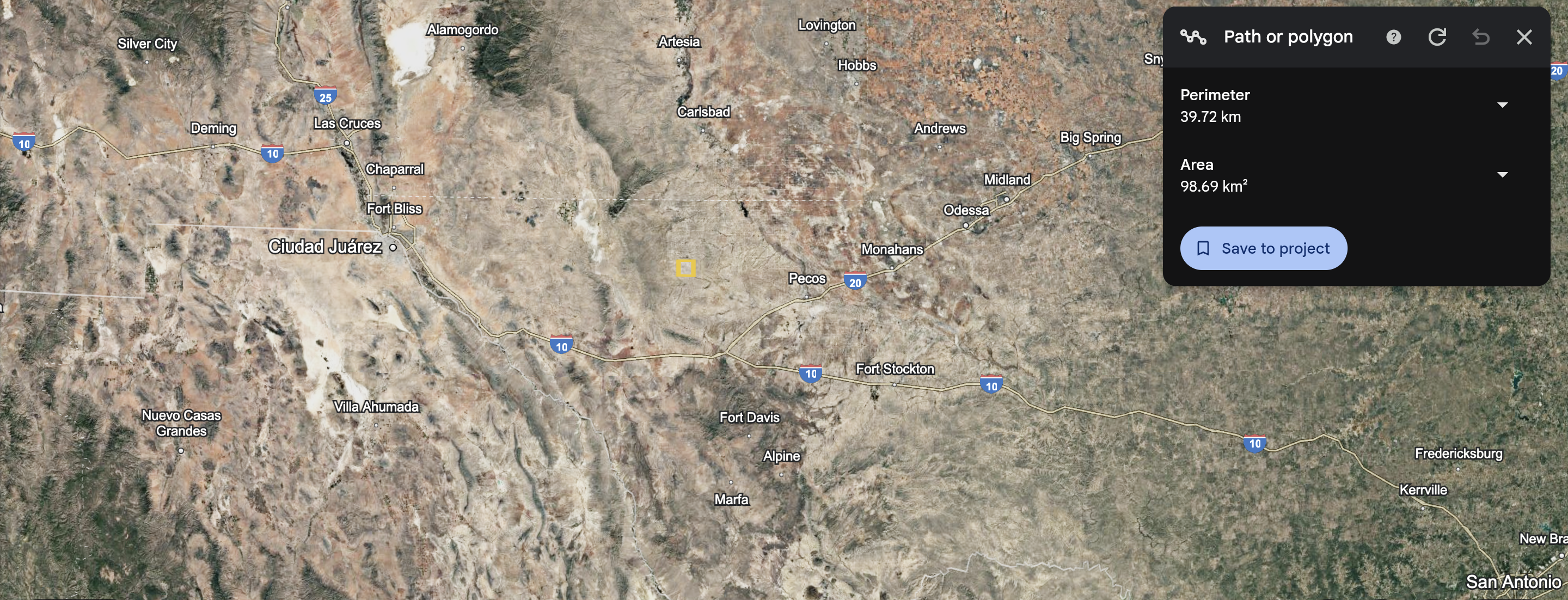Home
Solar refineries: what does it take to get to 1GW / day?

An oil refinery near our home. It turns oil into useful products and looks cool at night.
The US southwest is composed of several gas stations, a sparse interstate highway system, and several 10's of TW of useful solar power waiting to be deployed. It is a good thing the rocks and sand are so patient,
because we have really been taking our sweet time in doing anything with it.
Let's change that. As a simple thought experiment we can consider
what it would take to deploy 1GW of approximately-firm power per day. At that rate we could make a sizeable dent in the easily accessible reserves in a few decades. Now "a few decades" is, frankly, still far too long for this kind of thing, but it is at least within the lifetime of everyone reading this and so sets a lower bound for ambition in terraforming.
Assumptions:
- We will not bother with connecting anything to a grid — we are building solar refineries that process the photons into useful products on site.
- An average local horizontal irradiance of 6kWh / day (that's the average number of photons crossing a horizontal plane)
- A 20% panel efficiency
- Enough batteries provisioned to make it through the night at the average power, not the minimum power. That means we have a throttleable load and are willing to tolerate periods of reduced power when it's cloudy. This is not necessarily a practical assumption - in reality we might overbuild the panels a lot more, but these aren't the cost driver (see below) and this doesn't really change the scale of the problem.
- Night is 16 hours long
Let's just consider the deployment of the power supply, not the load that consumes it on site, as the material requirements for that will be process-dependent.
Land requirements
The surface area required is dominated by the panels. We get an average of 50W electrical power per m2, and in order to make it through a 16 hour night we'll need to overbuild by a factor of three. 3 GW / (50 W /m2) = 60km^2 of photovoltaic area required. We can imagine packing this into a square 10km on a side, leaving some gaps to walk through.
A 10km x 10km square sketched in the far west of Texas. The portion of the US shown on the screen here has room for about 3500 of these.
60km^2 / day works out to about 700m^2 / second. ~1 m/s is walking pace, which means that 700 1m-wide work lines laying panels at walking pace 24/7 can complete the photovoltaic deployment in a day. To within a factor of a few, that's 700 x 24 = 16,800 man hours to deploy the photovoltaics. A single work line covers a distance of 86.4km as it winds back and forth across the square. If you think walking pace is unreasonable, you can adjust these figures up or down to your taste, but it's going to be on the order of 1,000 people or person-equivalents on site for the panel layout.
Mass requirements
First, the silicon. Let's say the panels are 200um thick. Silicon's density is 2300 kg / m^3, which puts the total mass at 27.6e6 kg, or if we round up between friends, about 30,000 metric tons. Next, if we plan for a 3mm glass cover on top, the density is about the same but the thickness is 15x greater, putting the glass mass at 450,000 tons. At 100Wh/ kg and 16GWh of storage, we'll need 160,000 tons of batteries. With aluminum frames on the panels the total mass input is close to three quarters of a million tons; let's be generous and say 1M ton to get the whole thing built out. Over twenty four hours, that comes out to roughly ten tons per second. If we were delivering all this material day-of, since a standard semi truck can carry about 40 metric tons on highways, we'd have one fully loaded semi arriving four seconds. We'd therefore want to stockpile the inputs beforehand at multiple sites before work crews arrive.
How does that translate into cost?
First, for the materials, assuming we don't make anything ourselves: at $0.1 / W , the panel cost would be $300M, and at $100 / kWh, it's $1.6B in batteries. All together that's about $2B for the core of the power plant. The labor cost is negligible compared to this.
The cost of the land depends a lot on where you go, but in the far west of Texas you can get it for about $300,000 per square kilometer. That comes out to about $30M for the plot, also negligible.
All in all, it comes out to something like $2B total or $2/W, dominated by the cost of batteries. If you value useful energy at $0.1 / kWh, it pays for itself in a few years.
Permian round two
As a point of comparison we can look at the raw material input rate that feeds fracking in the Permian basin. The Texas DOT reports about 340M ton of sand and water trucked in the basin per year - if you squint, that's roughly equal to the 1M ton per day we found for inputs. The same report gives a figure of 4 million barrels per day of oil production in the Permian, although it's currently closer to 6M / year; one barrel is about 6e9J of heat energy, so that comes out to about 400GW of thermal power production growing at ~20% per year. We could figure the useful power at about a third of that. Apparently, then, by tapping the Permian's solar resources and without changing the scale of the logistics required, we can eclipse this power output in less than a year and continue growing at ~100% per year.Food for thought!


